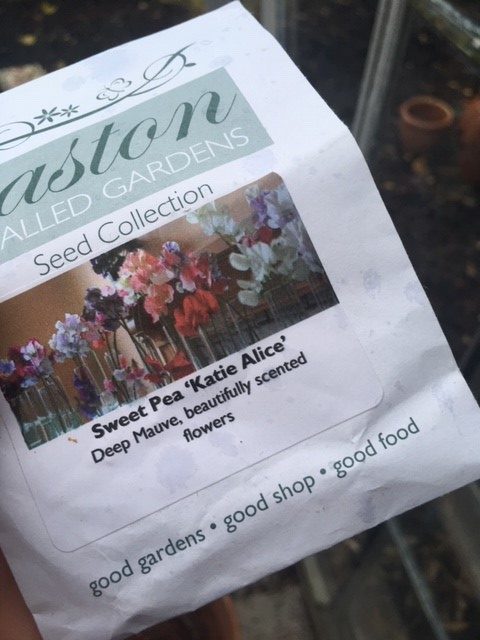
The jobs I love doing in the depths of winter in the greenhouse are those that transport me to the height of summer. If I am going to brave getting my hands chilly and have to stamp my feet while sowing seeds, I want it to be for blousy blooms waving in a soft breeze. If there is going to be icy rain pattering against the panes, I want to be thinking of rows of tender broad beans that arrive with the warm weather, and the flowers that Im going to be picking as I take them in for my tea.
You can do your sweet pea sowing in autumn, but I forgot, and you can leave sweet pea sowing until early spring, but the longer they get to grow over winter, the more growth they will put on. Plus I have the time now, and so in they go. It wont be a great deal of top growth, and you might even feel that there would have been little difference if you had left them to sow until spring, but it is what is happening beneath the soil that is important. While little obvious growth is happening, roots are slowly growing and developing, stretching out into the cool compost. A good developed root system in spring allows the plants to start straight into growth as soon as the weather shows any hint of warming, and that means lots of growth early in the year, which means much earlier flowers. Sweet peas in early summer are such a treat that I don’t mind getting a little cold.
The trick here is to allow the sweet peas a really good root run, as the roots love to set off for deep earth, and we want to encourage this tendency. You can buy brilliant ‘roottrainers’ which make long and thin pots with ridges down the sides that guide the roots south, encouraging their natural tendency, or you can pack a load of loo roll inners into a high sided seed tray, fill them with compost, and plant one or two seeds in the top of each. If I haven’t collected up enough of these, I will sometimes sow them into the top of a large pot of compost, spacing the seeds all around the edge, with a few in the middle. This gives them the volume of compost they need to reach their roots down into and makes them easy to keep watered, but you do need to be a little careful when planting out, as the roots may have intertwined with each other and need careful teasing away.
Come spring, and a few weeks before tipping out the pots and pulling out the seedlings ready to plant, it is a really good idea to nip back the seedlings. This will prevent them from just sending up one or two shoots and will instead encourage a bushier habit which will lead to more branches on which the plant can produce flowers. I will take mine out of the greenhouse and plant them around a brushed steel obelisk I have almost especially for the purpose, but which I grew early peas and later a winter squash up this year. It’s time for it to have some prettiness and scent. I can’t wait to pick bunches on gentle summer evenings and breath them in deeply as I head up the path to the house, before popping them into a vase to enjoy their scent wafting throughout the house with the summer breeze that comes through the open windows. Then this chilly winter task will have been so worth it.


